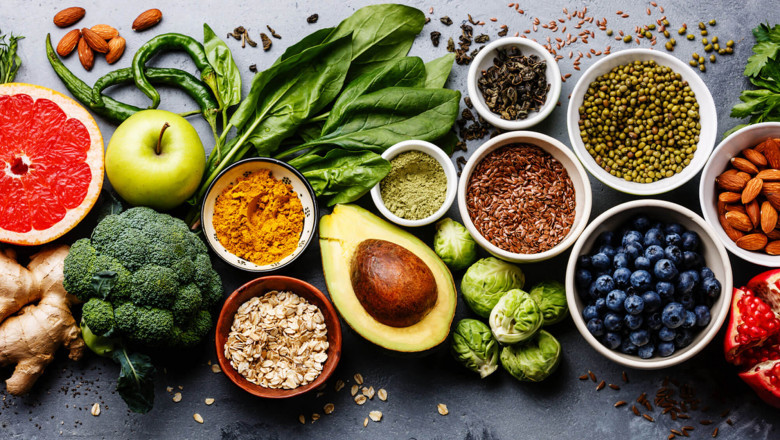views

7 Best Foods for Pain Management
Chronic pain can be so prevalent that medications and even mind-body therapies may not be adequate to alleviate it. Four out of every five persons with chronic pain have experimented with alternative treatments, such as eating certain foods or chemicals that are considered to provide pain relief.
All of the foods listed here have a place in a balanced diet, and eating and cooking with them can be beneficial to your overall health. Even so, it's always a good idea to speak with your pain doctor about what kinds of medicines you're trying to be sure none of them will conflict with each other.
1. Olive oil
People who consume a typical Mediterranean diet (which is rich in olive oil) appear to have fewer health disorders associated with inflammation, such as degenerative joint illnesses or diabetes. This has piqued researchers' interest in olive oil's anti-inflammatory properties.
Extra-virgin olive oil, in fact, may contain components that are comparable to ibuprofen, making it an excellent oil for cooking or using in salad dressings as part of your daily pain management regimen.
2. Red grapes
Resveratrol, a chemical component found in red grapes, is thought to have anti-inflammatory properties. Resveratrol can be present in a variety of foods, including berries and peanuts.
Resveratrol has been proven to prevent some cells in the body from reacting to inflammation signals, implying that it could eventually aid with pain relief. Following that, studies have shown that combining resveratrol and turmeric may improve the ability to fight inflammation, which is vital when you're in pain.
3. Salmon
Salmon is a deep-sea fish high in omega-3 fatty acids that is a healthy addition to anyone's diet, even if they aren't in pain. This sort of good fat is known to provide a number of health benefits, including a reduction in inflammation.
Salmon, in addition to its healthful lipids, contains calcitonin, a substance that has been shown in clinical research to lower joint inflammation and may protect against osteoarthritis pain.
4. Ginger
Ginger is a flavorful root that may be used in everything from stir-fries to gingerbread pastries. It's most commonly used to treat nausea, but it's also been discovered to have molecules that fight inflammation, which is a common source of pain.
There are few side effects to including ginger in your diet or taking it in tablet form, even if clinical trials have not proved it to be consistently useful for joint pain.
5. Thyme
Thyme is a fragrant herb with small leaves that are used in cooking to improve the flavors of a variety of dishes. According to a study, thyme chemicals may interfere with pain perception, though scientists aren't clear how the plant accomplishes this.
Thyme was found to be just as effective in lowering pain perception in mice in the lab as the anti-inflammatory medicine dexamethasone. While the inquiry is ongoing, try adding thyme to stews, sauces, and other meals to add flavor.
6. Turmeric
Turmeric, commonly known as curcumin, is a yellow-colored spice that gives curry and other Indian dishes their distinct hue. It also appears to have anti-inflammatory properties and has been investigated as a potential treatment for rheumatoid arthritis chronic pain.
Turmeric is available in capsule form if you want to test it for pain, but you can also cook with it on a regular basis – it goes great with ginger in curries.
7. Coffee
According to some studies, even small amounts of caffeine (about 100 milligrams, or the amount in a cup of drip-brewed coffee) can significantly lower pain perception during a painful and arduous task.
Caffeine is commonly found in coffee, but it can also be found in other foods such as tea, chocolate, and numerous sodas. Even if caffeine relieves your chronic pain, see your doctor about appropriate caffeine dosages.












